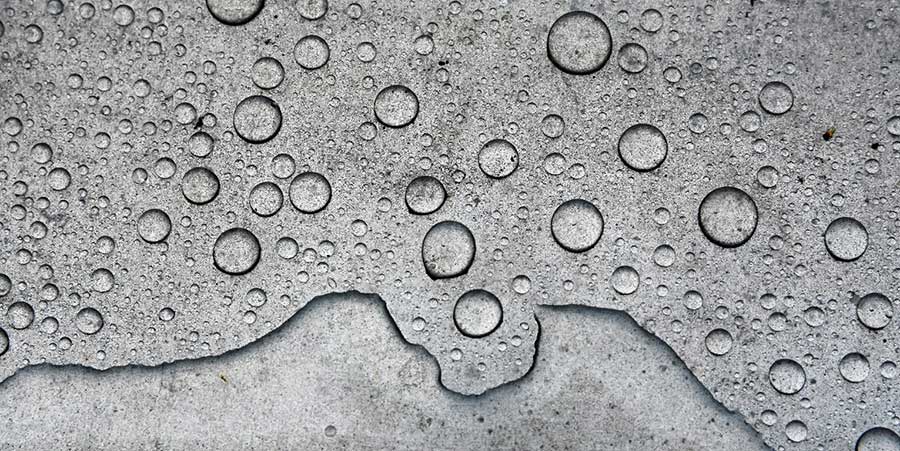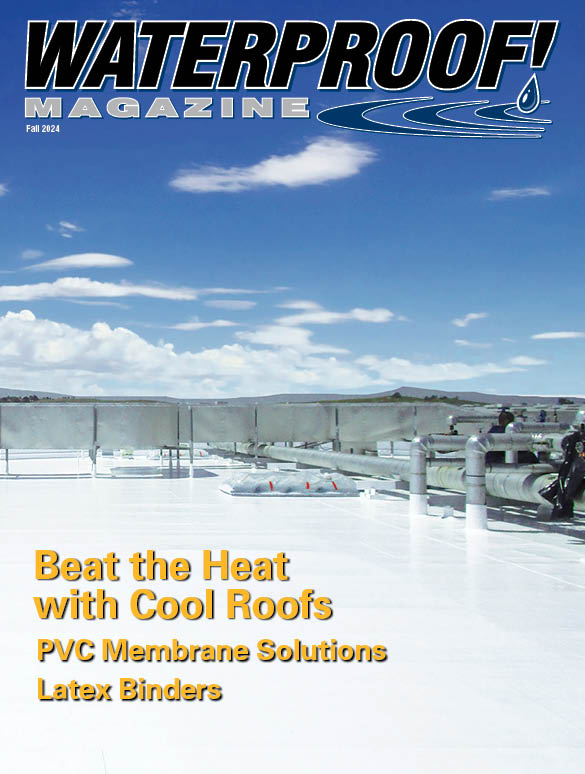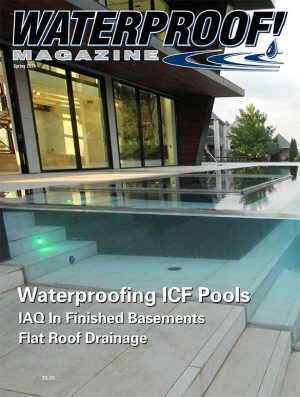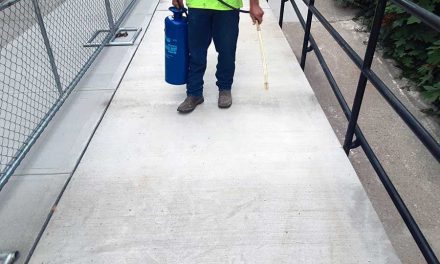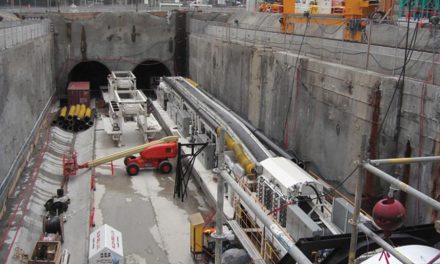By Cassandra Brown
Waterproofing is an essential aspect of construction that protects buildings from water damage and moisture-related issues. Concrete, which is a pivotal material in many structures, is porous and will absorb water, waterborne contaminants, and chemicals; all of which will cause significant and expensive structural damage over time. Not to mention, can lead to mold growth and other health risks to those who work within said buildings/structures.
There are multiple ways to waterproof, but crystalline waterproofing has become a popular technique. Traditional waterproofing methods rely on a barrier system that prevents water from penetrating the surface. However, these systems can fail over time due to wear and tear, shifts in the substrate, or exposure to harsh weather conditions. Crystalline waterproofing offers a unique solution to this age-old problem by creating a permanent and self-sealing barrier within the concrete. We’ll go over what crystalline waterproofing is and the science behind it; hopefully helping you to better understand this waterproofing methodology.
What Is Crystalline Waterproofing?
Crystalline waterproofing is a type of waterproofing that uses crystalline technology to prevent water penetration in concrete structures. This technology works by using chemicals to create a crystalline structure; a network of insoluble, microscopic crystals within the concrete.
The process begins with either applying a mixture of chemicals topically, to the surface of the concrete, or by integrally, as part of the concrete mix design; with the active ingredients typically being made from a blend of cementitious materials, sand, and proprietary chemicals. For topical application, the mixture is applied to the surface of the concrete; while integral application already has the mixture as part of the concrete design. From here, the chemicals will react with the byproducts of the cement’s hydration (free lime) in the presence of water, leading to the natural formation of insoluble crystals. The crystals form inside the pores, capillaries, and micro-cracks in the concrete; growing a network of calcium silicate hydrate (C-S-H) crystals. This netting of needle-like, insoluble crystals fill up all the micro-cracks, pores, and capillaries, sealing the concrete and preventing the ingress of water. The process of crystallization continues over a period of time, making the waterproofing barrier stronger and more effective as it forms.
Crystalline waterproofing is a durable and long-lasting solution that can provide protection against water damage and mold growth for the life of the structure. This process is often used to waterproof below-grade structures such as foundations, basements, and tunnels; and is also an eco-friendly without the use of harmful chemicals.
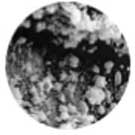
Unfilled space in cement paste capillarity.
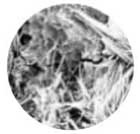
Filled space in cement paste capillarity.
Why Is Crystalline Waterproofing Important?
Crystalline waterproofing offers several advantages over traditional waterproofing methods. Most notably, it is a long-lasting solution and a self-healing system that can repair micro-cracks that may occur in the concrete over time. This also means that, because of its long-lasting and self-sealing barrier within the concrete that is resistant to water penetration, freeze-thaw cycles, and other common causes of concrete deterioration; crystalline waterproofing does not rely on a barrier system that can fail due to wear and tear or exposure to the elements. This makes it an ideal solution for a wide range of applications, including swimming pools, water treatment plants, tunnels, bridges, and other critical infrastructure.
Crystalline waterproofing is a powerful, highly effective, and cost-efficient technique for protecting concrete structures from water damage. It has become a trusted technology that offers a permanent and self-healing solution to water penetration by using the natural process of crystallization to create a network of insoluble crystals that fill the capillary pores and micro-cracks in the concrete, effectively sealing it and making it impervious to water. This makes it an ideal solution for a wide range of applications, including critical infrastructure, where water damage and moisture-related issues can have severe consequences.
Know When To Topically Apply Vs. Integrally Mix
Crystalline waterproofing can be applied in two different ways: topically, as a coating or sealer, or integrally, by adding it to the concrete mix during the construction process. The choice between these two methods depends on several factors, including the project requirements, site conditions, and the desired level of waterproofing.
Topical crystalline waterproofing application should be used when:
- Waterproofing an existing structure: If you need to waterproof an already-built concrete structure, applying a crystalline waterproofing coating or sealer is the best option, as it forms a barrier on the surface to prevent water ingress.
- You require a cost-effective solution: Topical waterproofing is usually more affordable than integral waterproofing.
- You need a fast application: Topical waterproofing can be applied relatively quickly, making it suitable for projects with tight schedules.
Integrally adding crystalline waterproofing to your mix design should be used when:
- Constructing a new structure: Adding crystalline waterproofing to the concrete mix during construction ensures that the entire structure is protected from water ingress. This method is ideal for new construction projects, as it offers long-lasting protection.
- You require a durable and permanent solution: Integral waterproofing provides a more durable, long-lasting solution than topical waterproofing, as it is incorporated into the concrete mix and becomes an integral part of the structure.
- Waterproofing in hard-to-reach areas: Integrally adding waterproofing to the mix ensures that even inaccessible or difficult-to-reach areas are protected.
- Constructing a structure exposed to harsh conditions: Integral waterproofing is ideal for structures that will be exposed to extreme weather, chemicals, or abrasion, as it offers superior protection compared to topical waterproofing.
The choice between topical and integral crystalline waterproofing depends on the project requirements, site conditions, and desired level of waterproofing. Topical waterproofing is suitable for existing structures, cost-effective solutions, fast applications, and temporary or less durable solutions. On the other hand, integral waterproofing is ideal for new construction, durable and permanent solutions, hard-to-reach areas, and structures exposed to harsh conditions.
Cassandra Brown
Cassandra Brown is the Marketing Content Coordinator at W. R. Meadows. For this piece, she worked alongside W. R. Meadows’s industrial coatings business development representative Gary Tench to bring insights into crystalline waterproofing systems. As a graduate of the CIM (Concrete Industry Management) program from MTSU, as well as more than 10 years of experience in the construction supply manufacturing industry, Gary provides leadership and guidance to grow the product portfolio of the Gemite line and other W. R. Meadows industrial coating products.
Fall 2024 Back Issue
Price range: $4.95 through $5.95
Cool Roofs Can Revolutionize Your Customer’s Facilities to Beat the Heat
Enhancing Moisture Management with Latex Binders
Benefits of Opting for a Liquid-Applied Roof Coating Over a Complete Tear-off
PVC Membrane Solutions For Aquatic Facility Decks
Crystalline Waterproofing: The Science Behind It & Why It’s Important
Case Study: Terra-Lok Triumph
Description
Description
Cool Roofs Can Revolutionize Your Customer’s Facilities to Beat the Heat
By Kyle Ziebarth
As temperatures are reaching unseasonable highs in many areas of the country, more industrial and commercial building owners are trying to rein in out-of-control cooling costs.
Enhancing Moisture Management with Latex Binders
By Mike Christy
Latex binders are polymers that are found in various applications, including waterproof membranes, roof coatings, and waterproof barrier coatings.
Benefits of Opting for a Liquid-Applied Roof Coating Over a Complete Tear-off
By Edward Klonowski
Many commercial roofing manufacturers offer warranties on the lifespan of commercial roofs. But if your roof is damaged and not under warranty, you have options that may be more cost-effective and waste-avoidant.
PVC Membrane Solutions For Aquatic Facility Decks
By Matthew Sands
Decks around swimming pools and splash pads are often plagued with cracks, chips, broken tile, peeling paint, flaking, and delamination. A cost-effective solution is to cover the existing deck or flooring with reinforced PVC deck membrane.
Crystalline Waterproofing: The Science Behind It & Why It’s Important
By Cassandra Brown
Traditional waterproofing methods rely on a barrier system that prevents water from penetrating the surface. Crystalline waterproofing creates a permanent and self-sealing barrier within the concrete.
Case Study: Terra-Lok Triumph
King Mesa Gin in Lamesa, Texas, faced significant water intrusion in the basement’s “press pit,” threatening the safety of its personnel and the integrity of its equipment and products.
Additional Info
Additional information
| Weight | N/A |
|---|---|
| Magazine Format | Digital Download Magazine, Print Mailed Magazine |

